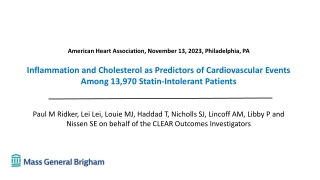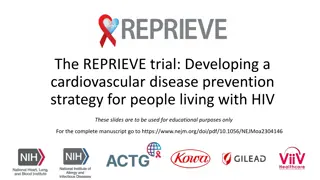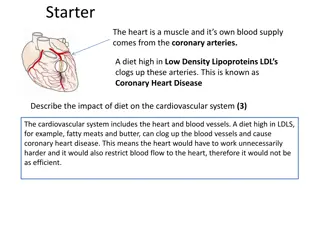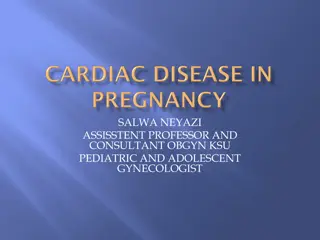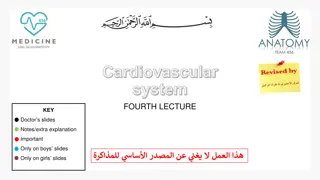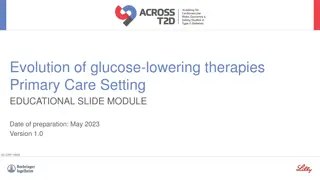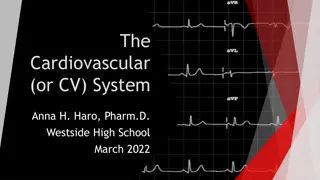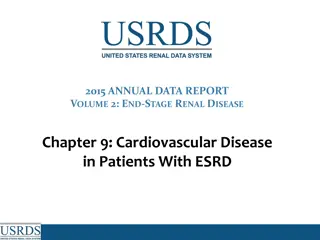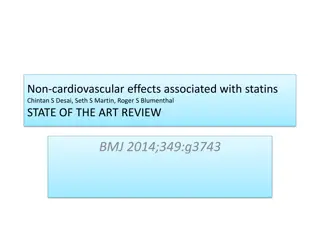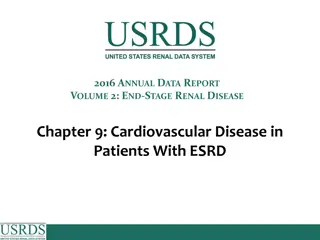Cardiovascular System Components and Functions
This content includes clicker questions on the cardiovascular system, covering topics such as system components, blood flow, heart attacks, capillaries, blood composition, and risk factors for cardiovascular disease. Explore the functions and structures involved in the circulatory system through these interactive questions.
Download Presentation

Please find below an Image/Link to download the presentation.
The content on the website is provided AS IS for your information and personal use only. It may not be sold, licensed, or shared on other websites without obtaining consent from the author.If you encounter any issues during the download, it is possible that the publisher has removed the file from their server.
You are allowed to download the files provided on this website for personal or commercial use, subject to the condition that they are used lawfully. All files are the property of their respective owners.
The content on the website is provided AS IS for your information and personal use only. It may not be sold, licensed, or shared on other websites without obtaining consent from the author.
E N D
Presentation Transcript
Biology for a Changing World, 2e Clicker Questions Chapter 27
Which of the following would NOT be considered a component of the cardiovascular system? A. blood B. veins and arteries C. the lungs D. the heart E. All of the above.
Which of the following represents the correct order of the structures that blood moves through in the systemic circuit? A. Right ventricle Pulmonary artery Lungs Left atrium B. Left ventricle Aorta Body Right atrium C. Left atrium Aorta Lungs Left ventricle D. Right atrium Right ventricle Body Aorta E. Pulmonary artery Aorta Lungs Body
A man suffers a heart attack on a golf course, but survives. His heart attack was likely the result of a fatty deposit in __________. A. his coronary arteries B. his right atrium C. his left ventricle D. his venae cavae E. his left atrium
Which of the following statements is true regarding the capillaries in a human body? A. The diameters of capillaries are smaller than those of veins or arteries. B. Blood pressure in capillaries would be lower than blood pressure in arteries. C. Gases can easily diffuse into (or out of) blood contained in capillaries. D. Capillaries would be found in neural tissue, muscles, lungs and the stomach. E. All of the above.
A seamstress pricks her finger with a needle, and a droplet of blood forms on her fingertip. Which of the following could be present in this drop of blood? A. sugars and medications B. erythrocytes and leukocytes C. insulin and estrogen (i.e., hormones) D. oxygen and carbon dioxide gases E. All of the above.
A doctor is evaluating a patient during a physical, and notes that this patient exhibits many risk factors for cardiovascular disease (CVD). This patient may have which of the following? A. a high-salt, high-fat diet B. a family history of CVD C. obesity D. high blood pressure E. All of the above.
A nurse has taken the blood pressure of a patient, which he determined to be 125/82. The 82 value represents the ________ pressure of the patient, which the nurse was able to determine when the ventricles of his patient ___________. A. systolic; contracted B. systolic; relaxed C. diastolic; contracted D. diastolic; relaxed E. None of the answer options are correct.
A blot clot has detached from a plaque in a woman s artery, and is now free-floating in the woman s blood. If the blood clot makes it way to the brain, the woman could suffer _________. A. a stroke B. a heart attack C. an atherosclerosis D. a fatty streak E. a leukocyte


